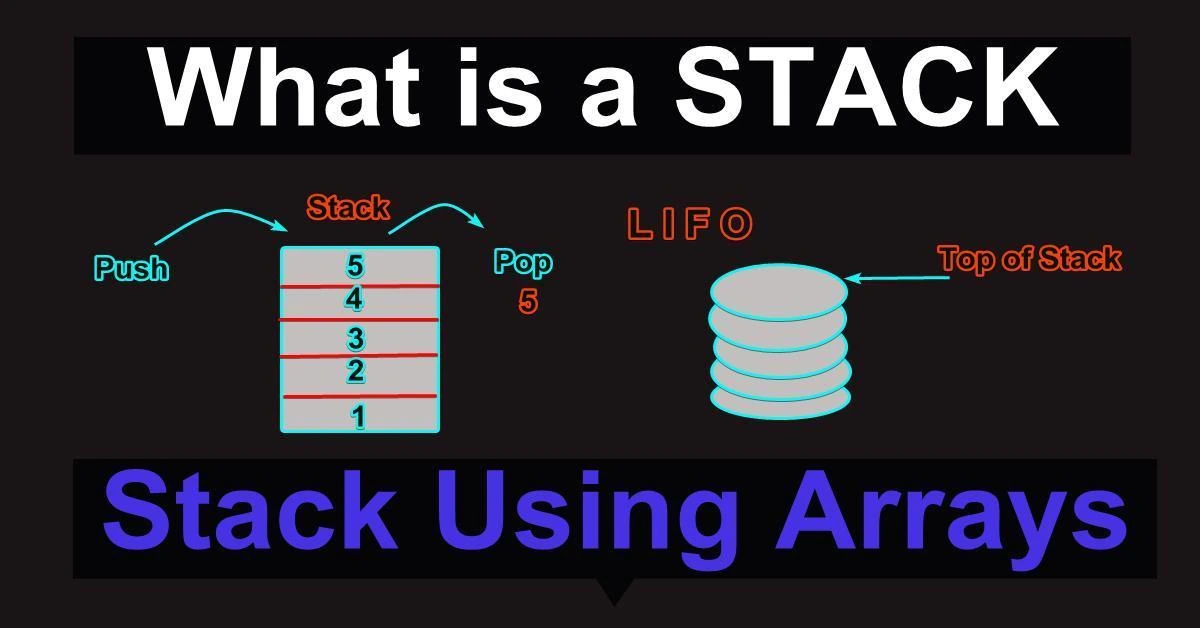Why You’ll Love This Guide
Unlock the power of stacks—a foundational data structure that supercharges your problem-solving skills! Whether you’re a coding newbie or prepping for interviews, this guide breaks down stacks effortlessly with Java examples and 5 handpicked LeetCode challenges to test your skills. Let’s dive in!
Table of Contents
What is a Stack? 🥞
A stack is a linear data structure that follows the LIFO (Last In, First Out) principle. Imagine a stack of plates: the last plate placed on top is the first one you remove. Similarly, in programming, the last element added to a stack is the first to be removed.
Key Operations of a Stack
- Push: Add an element to the top of the stack.
- Pop: Remove the top element from the stack.
- Peek (or Top): View the top element without removing it.
- isEmpty: Check if the stack is empty.
- Size: Return the number of elements in the stack.
Simple Java Implementation
Here’s a basic stack implementation using ArrayList In Java:
import java.util.ArrayList;
public class Stack {
private ArrayList<Integer> stackList;
public Stack() {
stackList = new ArrayList<>();
}
// Push operation
public void push(int value) {
stackList.add(value);
}
// Pop operation
public int pop() {
if (isEmpty()) {
throw new RuntimeException("Stack is empty!");
}
return stackList.remove(stackList.size() - 1);
}
// Peek operation
public int peek() {
if (isEmpty()) {
throw new RuntimeException("Stack is empty!");
}
return stackList.get(stackList.size() - 1);
}
// Check if stack is empty
public boolean isEmpty() {
return stackList.isEmpty();
}
// Get stack size
public int size() {
return stackList.size();
}
public static void main(String[] args) {
Stack stack = new Stack();
stack.push(10); // Stack: [10]
stack.push(20); // Stack: [10, 20]
stack.push(30); // Stack: [10, 20, 30]
System.out.println("Top element: " + stack.peek()); // 30
stack.pop(); // Removes 30
System.out.println("New top: " + stack.peek()); // 20
}
}Output:
Top element: 30
New top: 20Why Use Stacks?
Stacks are essential for:
- Undo/Redo mechanisms in text editors.
- Function call management in recursion.
- Syntax parsing (e.g., checking balanced parentheses).
5 Stack Problems to Crush on LeetCode
- ✅ Valid Parentheses (#20) – Perfect for beginners!
- ⚡ Min Stack (#155) – Master efficiency!
- 🧮 Evaluate Reverse Polish Notation (#150) – Level up your logic!
- 🔄 Implement Stack Using Queues (#225) – Think outside the box!
- 🌡️ Daily Temperatures (#739) – Ace real-world scenarios!
Why Stacks Are a Game-Changer
- Speed: O(1) time for core operations.
- Simplicity: Intuitive logic for backtracking or recursion.
- Versatility: Used in compilers, browsers, and AI algorithms!
Tip
Stacks are your secret weapon for coding interviews. Practice the LeetCode problems above, and you’ll dominate questions on nested logic, history tracking, and more!
Final Thoughts
Stacks are a foundational concept in computer science, used in everything from algorithms to real-world applications. Start with the Java example above, then tackle the LeetCode problems to solidify your understanding. Happy coding! 🚀
Also Read: How to Find the Second Largest Element in an Array
